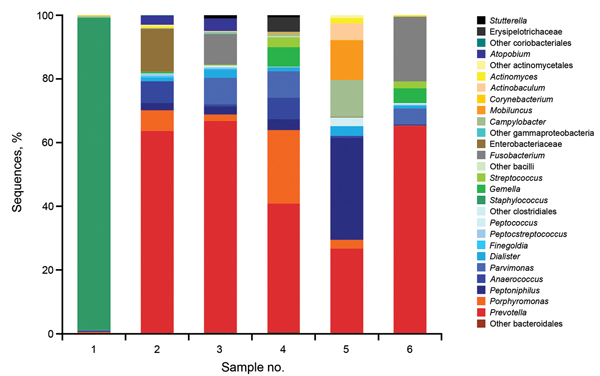Volume 20, Number 12—December 2014
CME ACTIVITY - Research
Bacterial Pathogens Associated with Hidradenitis Suppurativa, France
Figure

Figure. Microbial diversity of hidradenitis suppurativa (HS) lesions as assessed by high-throughput 454 sequencing. The bacterial diversity of 6 consecutive and representative HS lesions was assessed by high-throughput sequencing. Sample 1 corresponded to an acute Staphylococcus lugdunensis abscess sampled by needle aspiration. Samples 2–3 (swabs) corresponded to Hurley stage 2 lesions of the axilla and inguinal folds, respectively. Samples 4–6 (swabs) corresponded to Hurley stage 3 lesions of the inguinal, axilla and gluteal fold, respectively. Staphylococcus spp. represented >99% of sequences of sample 1, whereas Prevotella spp. represented the most abundant taxon in 4/5 of these chronic suppurative lesions.
Page created: November 18, 2014
Page updated: November 18, 2014
Page reviewed: November 18, 2014
The conclusions, findings, and opinions expressed by authors contributing to this journal do not necessarily reflect the official position of the U.S. Department of Health and Human Services, the Public Health Service, the Centers for Disease Control and Prevention, or the authors' affiliated institutions. Use of trade names is for identification only and does not imply endorsement by any of the groups named above.